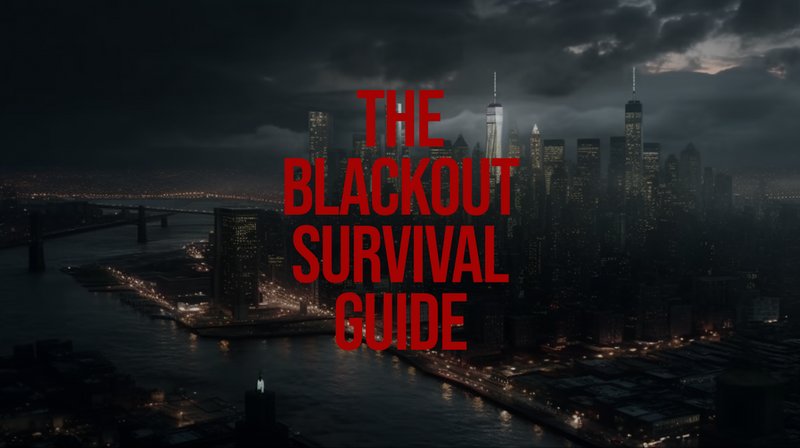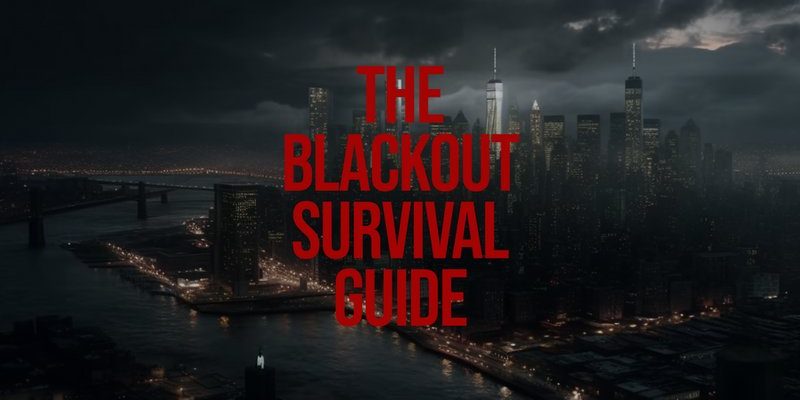
Imagine you’re at home, and everything goes dark. Without a flashlight in hand, it’s easy to feel lost. You might be wondering, “What do I need to survive this blackout?” That’s where a blackout survival checklist comes into play. Think of it as your survival kit, ensuring you’re ready for anything. Let’s dive into what you should include, so the next time the power flickers, you’re not left in the dark—figuratively or literally!
Understanding Blackouts: What Happens and Why?
Blackouts can occur for various reasons, and understanding these causes can help ease some of the anxiety they bring. A blackout refers to a total loss of power in a specific area, which can last from a few minutes to several hours. Factors like severe weather, faulty infrastructure, or even unforeseen accidents can contribute to these outages.
For instance, in the summer, thunderstorms can knock down power lines, leaving neighborhoods in a blackout. Other times, high demand for electricity can overwhelm the grid, resulting in rolling blackouts, where power is temporarily shut off in certain areas to conserve energy. It’s like a game of musical chairs—when the music stops, some areas are left without power.
Understanding the reasons behind blackouts isn’t just an interesting fact; it helps you prepare. For example, knowing that storms can cause outages may prompt you to gather supplies before severe weather alerts.
Essential Supplies for Your Blackout Survival Kit
Creating a blackout survival kit is like packing for a trip. You want to make sure you have everything you need without overdoing it. Here’s a list of essential items to include in your kit:
- Flashlights: Ensure you have at least a couple of battery-operated flashlights. Consider LED ones for longer-lasting light.
- Batteries: Stock up on various batteries for your flashlights, radios, and any other devices.
- Non-perishable Food: Canned goods, snacks, or dried fruit can keep you going if the outage lasts longer than expected.
- Water: Store at least one gallon per person per day for at least three days. Hydration is key!
- First Aid Kit: Accidents can happen, especially in the dark. A well-stocked first aid kit is critical.
Having these items on hand can make a huge difference when the power goes out. It’s a way to bring comfort during an uncomfortable time.
Staying Informed: Battery-Powered Radio and Cellphone Chargers
When the power goes out, staying connected can be challenging. A battery-powered radio can be a lifeline during a blackout, helping you stay updated on weather conditions or power restoration efforts.
Make sure to have a radio that’s easy to use and can pick up multiple channels. Battery-operated options are great, but consider having a hand-crank radio as a backup. This way, you can generate power to keep it running, even if your batteries run out.
Also, don’t forget a portable cellphone charger. When the lights go out, you might not need your phone for Netflix, but it’s crucial for keeping in touch with family or checking for updates.
Cooking Without Power: Alternative Methods
Without an oven or stovetop, cooking can feel like a challenge, but it’s not impossible! Here are a couple of methods to prepare food during a blackout:
1. Grilling: If you have a grill, it can be a game-changer. Just make sure to have enough propane or charcoal on hand. Grilling not only helps you cook but also keeps your spirits up with the smell of food and a little bit of outdoor fun.
2. Camping Stove: These portable stoves are great for heating food or boiling water. Just remember—they should only be used outside to avoid carbon monoxide poisoning.
3. Ready-to-Eat Meals: Stock up on meals that don’t require cooking, like canned soups or packaged meals. They’re easy to prepare and can be a quick fix when hunger strikes.
Maintaining Comfort: Keeping Warm or Cool
Depending on the season, blackouts can either leave you shivering in the cold or sweating in the heat. Here’s how to maintain comfort during an outage:
– Winter: If you live in a colder area, layer up! Wear extra clothing to keep warm, and consider using blankets or sleeping bags. You can also cozy up with candlelight to create a warm atmosphere (but make sure to keep flames away from anything flammable).
– Summer: To beat the heat, open windows for cross-ventilation. If you have battery-operated fans, use them to circulate air. Hydration is key, so drink plenty of water to stay cool.
Planning ahead for temperature control can help make a blackout much more bearable.
Emergency Plans: Communication and Evacuation
Having an emergency plan is like having a roadmap in case of a detour. Here’s what to consider when creating one:
– Communication: Designate a family member to be the main point of contact. In case of a blackout, this person can relay information about everyone’s safety and whereabouts. Share phone numbers, and consider using text messages for updates since they may go through even when calls don’t.
– Evacuation Plan: Know where to go if your home becomes unsafe. Local shelters or friends’ houses can be great options. Ensure everyone in your household knows this plan and practices it.
Having a well-thought-out emergency plan provides peace of mind, knowing you and your family know exactly what to do when the lights go out.
Final Thoughts on Blackout Preparedness in Zip Code 48202
Blackouts don’t have to send you into a panic. With a blackout survival checklist tailored for residents in Zip Code 48202, you can feel ready for whatever comes your way. Think of it as your safety net; you might never need it, but it’s comforting to know it’s there.
From gathering essential supplies to planning for communication and comfort, being prepared can make all the difference. So, take a little time now to get everything in place, and you’ll sail through the next blackout with confidence—and maybe even a little bit of fun!
